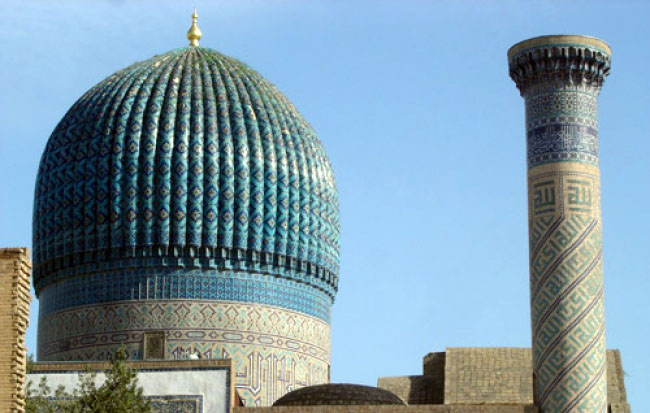Religion and art share long-term bond with each other. Research about religion and art shows a dialectic bond, which has resulted in their blossom, between them. However, discussing the relation between art and religion does not necessarily mean overlooking the conflicts. Although religions have paved the ground for art’s blossom, artists have been restricted in some cases. However, the entire art has never been opposed. If religion closes a door to art, it will open many other doors to it. For instance, picturing the living including God has been forbidden and sculpture is not allowed in Islam. On the other hand, we witness progress in art of writing. Koran, the Holy Book of Muslims, is the king in art of writing and, as it claims, no one has the heart to compete with it – such examples will be found in other religions as well. The fact is that art is men’s crying need and will manifest itself in various manner in human life.
Despite the historical and tortuous relation between art and religion, the question is that will art and religion coexist? The answer to this question will not be based on theology or philosophy of science but on sociology of art. The role of religion in producing art or art on the basis of religious criteria is not my dilemma in this commentary but the main objective is whether or not possible to deliver the message of religion in the frame of modern art.
I believe that using the modern art in this regard will be possible if religion is secularized or introducing art from religion’s perspective. The current situation in the society and inserting the logic of modern art in the realm of religion will be detrimental to religion and lead to its secularization. In this respect, secularization is not tantamount to religion’s marginalization from social life, but how to practice the religion.
It is believed that the autonomy of art has led to conflict. In the process of modernity, many facts, including art, claimed independence and the legitimacy of art is determined by itself rather than by an external factor like religion. If religion was the measure of all things in traditional societies, it is no more a criteria in modern life and changed into a simple institution. According to Weber, common criteria has disappeared in modern society for various conflicting values. Therefore, beauty, the fundamental character of art in modern life and sanctity, the basic character of religion are not concomitant. For example, something will not be beautiful but will be sacred and perhaps the lack of its beauty will be the reason behind its sanctity. The fact is not always supported by beauty or sanctity. It should be noted that the inner logic of art means its subjection to modern logic – which has marginalized religion. Weber says that the progress in modern logic and reasoning prompt men to judge not on final values but on personal tastes.
Bourdieu believes that the realm of art, as the product of historical experience and ground for power, will impose its obligation on those who step in. It means that the nature of being artistic or not will be determined by the logic of art rather than a spiritual issue. The mysterious hand active in the realm of art is demand and supply. This issue is not in coordination with religious criteria since the religious legitimacy is not subject to the logic of market. Hence, when art is involved in the realm of religion, it will produce religious elements in secular frame and tone. The spiritual opinion of religion will not be expressed in the secular frame of art since there is exact similarity between form and spirit. Spiritual opinion has its certain language.
The next aspect which will be to the detriment of religion, if it is put in the realm of art, belongs to its essence. The essence of religion is virtue, whereas the nature of art is picture and image. Art reduces everything into image so as to conquer men’s senses and imagination. In this process, the spirit of religion also will be reduced to image. However, the main objective of religion is salvation through purity and it is void of any images. So, since art, unlike religion, is manifested in image, it will be in conflict with religion.
Illustrating religion in image will empty it from many of its characteristics. Hence, the relation of art with religion is possible when the content of art is considered not the form and image – which will be against religion. Art is a world with its certain values. It is also a salvation defined by its own. But the fact is that expressing the message of religion will not be possible in the frame of art.
Home » Opinion » The Coexistence of Art with Religious Tenets
The Coexistence of Art with Religious Tenets
| Dr. Aman Fasihi

